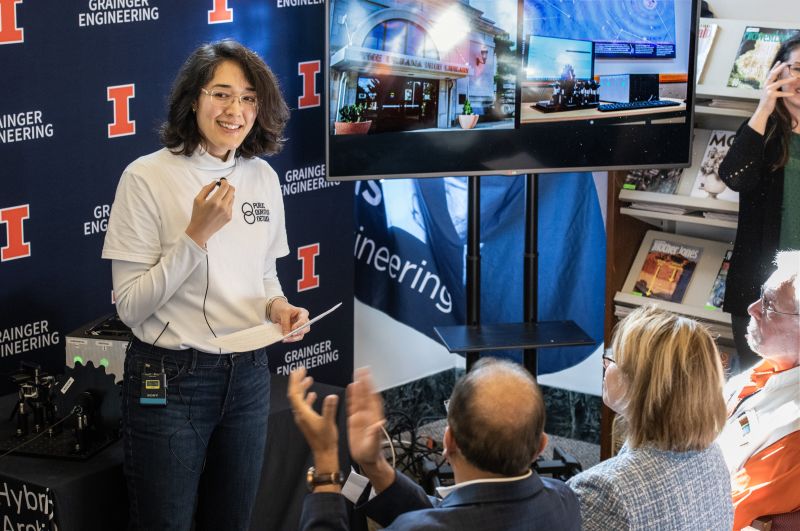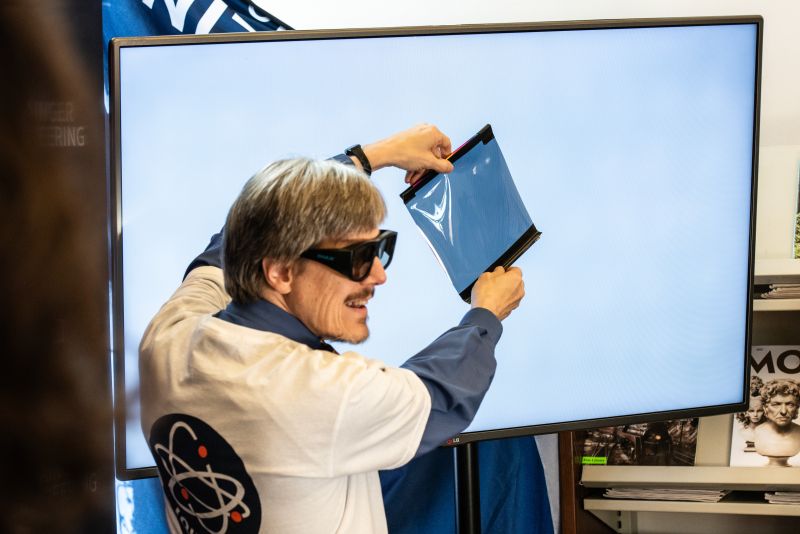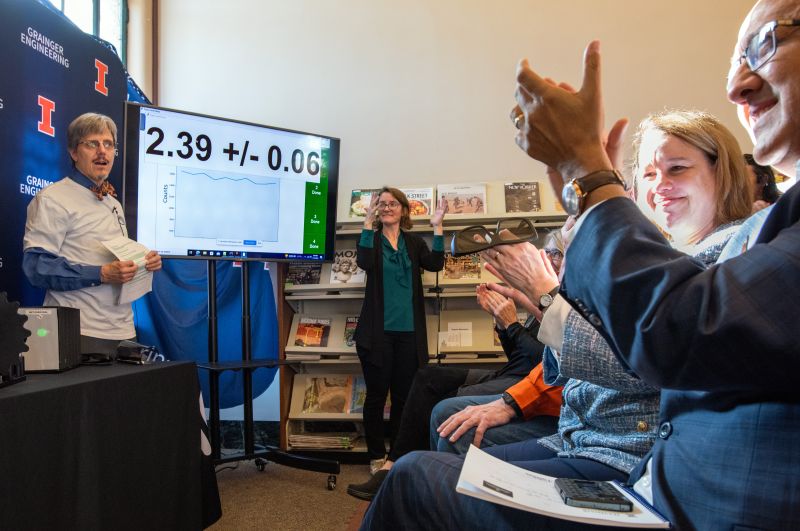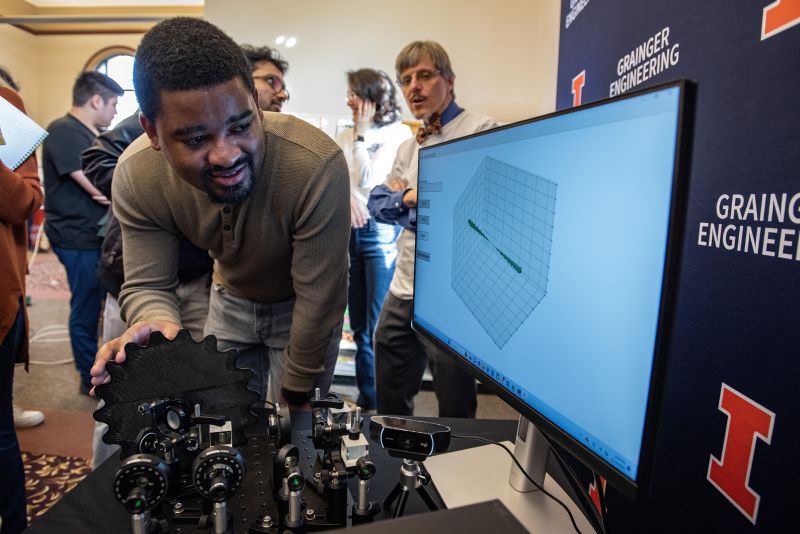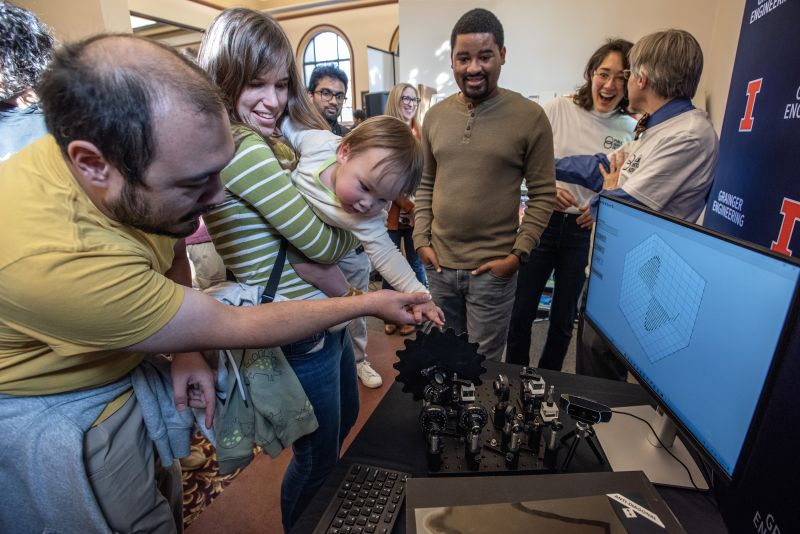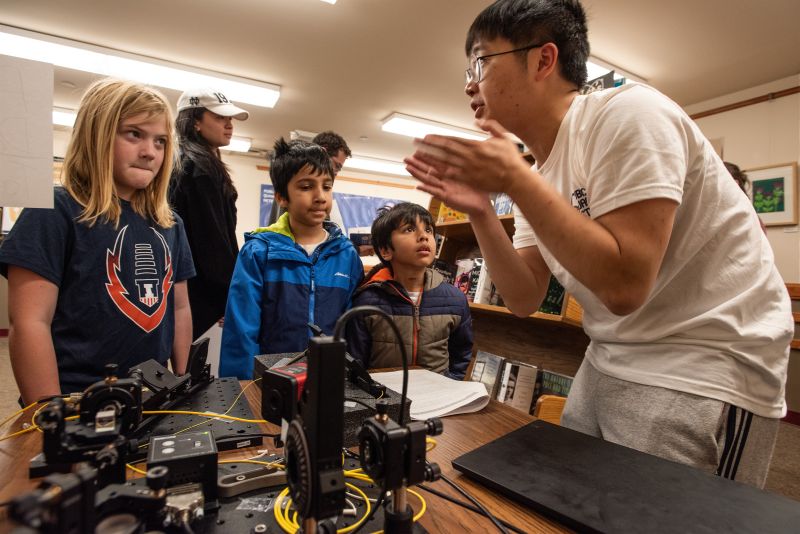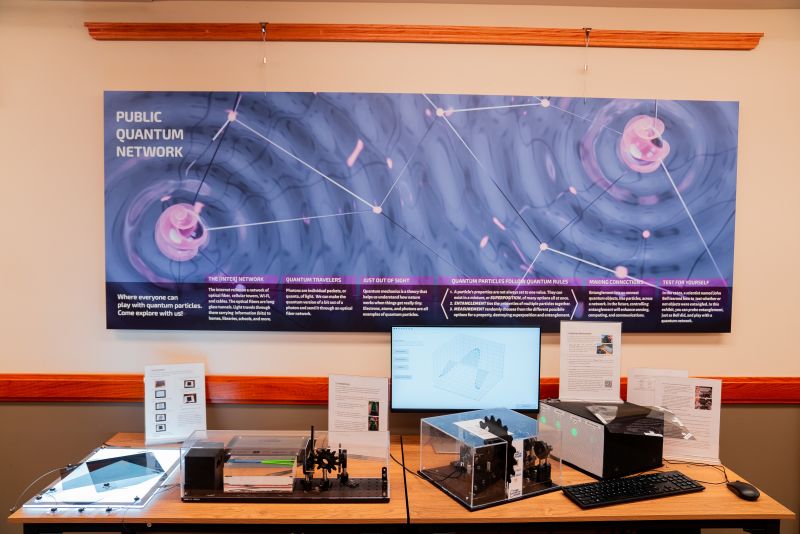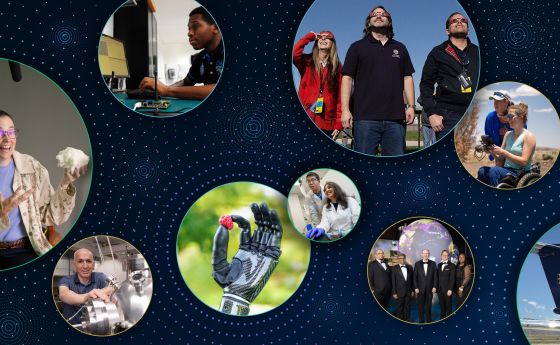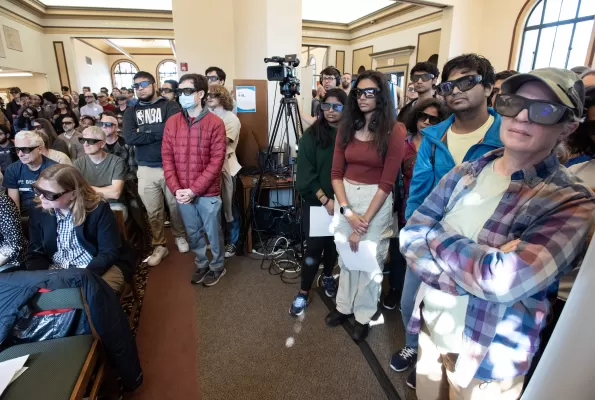
Bringing quantum entanglement to the people
Entanglement has historically had an aura of mystery or sci-fi surrounding it. Albert Einstein famously referred to the phenomenon as "spooky action at a distance." He was reacting to how pairs of particles, known as quanta, of light can under certain conditions react in tandem even if they are separated by large distances. Three researchers earned the 2022 Nobel Prize in physics for demonstrating definitively that entanglement is part of reality, whether or not we perceive it as strange. Today, scientists around the world are racing to use entanglement as the basis of improved quantum technologies.
The United States National Science Foundation Quantum Leap Challenge Institute Hybrid Quantum Architectures and Networks at the University of Illinois Urbana-Champaign's Grainger College of Engineering has created a working demonstration that brings entanglement between photons to a public setting for the first time. This unique educational exhibit debuted in November 2023 at the Urbana Free Library, where more than 200 observers of all ages had the opportunity to play around with quantum science and technology previously confined to research labs. Projects like this are critical in demystifying quantum concepts and inspiring learners of all ages to participate in STEM.
The core of the library exhibit is an interactive apparatus with rotatable optical elements that measure the orientation of light's vibration, or its polarization, sitting on a table in the library. Light is guided into and out of this apparatus via optical fiber connected to the University of Illinois — about two miles away.
On the other end of the fiber, the university has a dedicated source of "biphotons" that makes pairs of light quanta with correlated polarizations. One photon from each pair is sent in a loop to the library, through the interactive apparatus, and back, while the other part of each biphoton is kept at the university. The photons are then cross-examined using single-photon sensors — detectors for elementary light quanta. What is special is that every pair of photons behaves like a single but non-local quantum object, so that no matter how the public sets up the measurement of polarization at the library, the other part of the quantum state acts as if it immediately "knows" what measurement setting has been used. However, since the measurement outcomes are correlated but random, this cannot be used to transmit information between the parties without further communication.
NSF's Quantum Leap Challenge Institutes are large-scale interdisciplinary research projects that aim to advance the frontiers of quantum information science and engineering. Quantum physics and technology are becoming increasingly important in society, and growing this field will require getting young students excited about it, including through exhibits like the University of Illinois' that demonstrate cutting-edge quantum physics directly to the public.
To inspire the next generation of quantum technology users, the Illinois team also provided quantum education materials from multiple NSF-supported programs, including a coloring book, information from the National Q-12 Education Partnership and the Enabling Practical-scale Quantum Computing program, and quantum games from NSF's Advancing Informal STEM Learning program.
There is also a recording of the demonstration, and the "Public Quantum Network" now has a permanent presence at the library. The team continues to organize activities at the library for the public around this first node, and plans are underway to install more nodes both locally and in the Chicago area.



